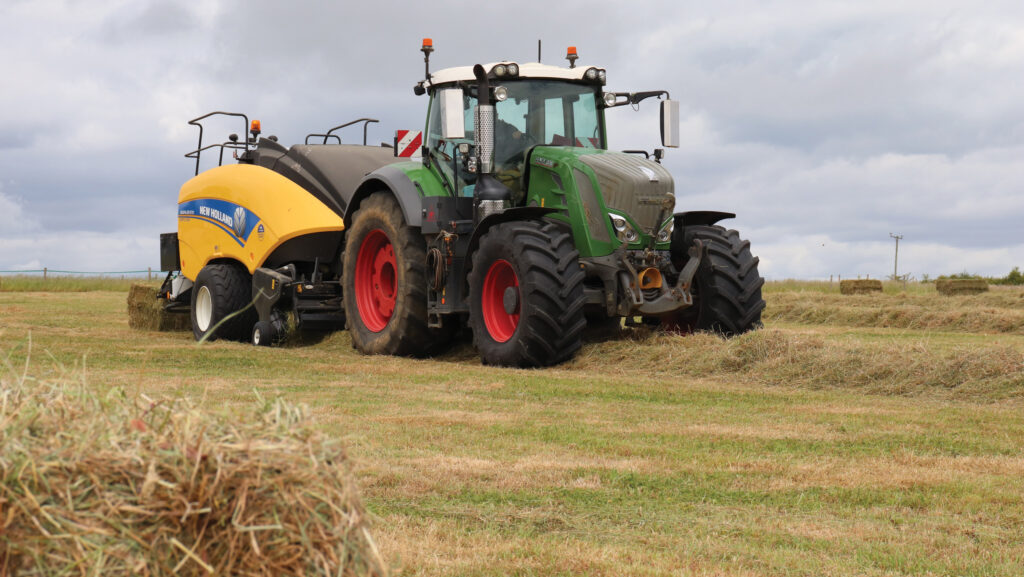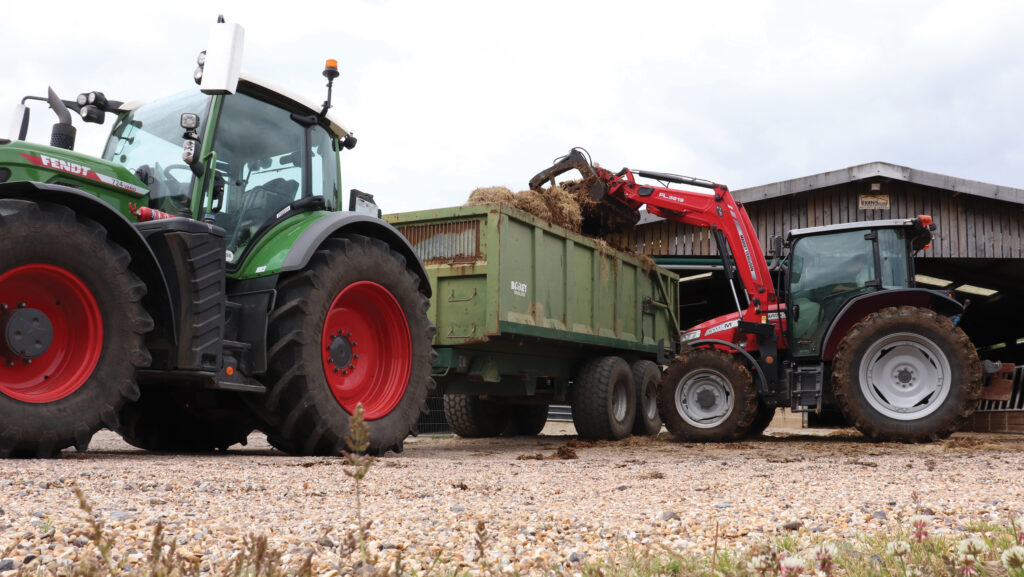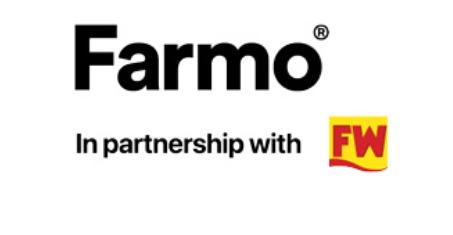Contractor Comment: Foraging work ditched for an easier life
 © Andrew Faulkner
© Andrew Faulkner Much can happen in four months. And so it’s proved for Isle of Wight contractor Rob Chapman.
When we last visited Rob’s base at Westover Farm, Calbourne, all the talk was of how his business would adapt to a dramatically reduced anaerobic digestion (AD) foraging area.
The reason? Because his main customer, Wight Farm Energy (WFE), had trimmed its regular 1,600ha feedstock requirement down to just 800ha for the 2025 season.
However, within weeks of our visit Rob had decided to ditch the foraging enterprise altogether, to focus on other areas of the Westover operation – baling and arable work.
See also: Contractor Comment: Staffing headaches as busy season sets in
Business facts: Westover Farm Contractors, Westover Farm, Calbourne, Isle of Wight
- Main services Combining (1,200ha), spraying (stubble-to-stubble plus 400ha), drilling (stubble-to-stubble plus 650ha), round/square baling (35,000 bales), ploughing (800ha) and muckspreading
- Other 700ha contract farming (stubble to stubble arable contracts) and 200ha of rented land
- Staff Four full-time plus another two during the busy season
Out of foraging
So, what’s prompted this radical change in direction? “Though I’d been toying with getting rid of the forager for a couple of years, I simply woke up one morning and thought ‘why prolong the pain’,” Rob explains.
“The foraging job was profitable, but not profitable enough to justify the stress that came with it: hiring in up to six or seven extra drivers, tractors and trailers; battling with island traffic when hauling to the plant; finding work for the extra drivers on wet days; and coping with the increasingly unpredictable weather.
“I wanted my life back. During the foraging season, contact with my long-suffering partner Kimberley and our two young children, Thea and Amelia, was largely done via FaceTime.
“Kimberley never moaned, but it was neither right nor fair.

Rob Chapman © Andrew Faulkner
“Compounding matters, the AD plant was applying pressure on me to cut my rate. Granted, that rate had increased by 35% since I started 15 years ago, but back then a new trailer was £15,000, tractor £80,000 and forager £200,000.
“Those machine prices, along with fuel and labour, have doubled over the same period, so that 35% rise now looks much less attractive. The additional subbie labour alone was costing me £1,000/day. In reality, we needed a higher contract rate, not a lower one.”
The AD plant halving Rob’s area for 2025 was clearly a major factor, too. And, when his main full-time operators, Henry Margham and Simon Basket, reacted positively to his exit plan, to concentrate on arable and baling work, that was it. Decision made.
“If the Island’s dairy sector had been large enough to sustain the foraging enterprise without the AD income, then I might have carried on. Sadly, though, there are now just four dairy farms left. Back in the late 1980s, there’d have been more than 100. A sign of the times.”
Exit plan
Next step was to shed the excess kit, which meant a call to auction specialist Cheffins.
The Cambs-based firm suggested an online auction, in part because of Westover’s island location, and also recommended including as much kit as possible to broaden the event’s appeal.
Heeding this advice, Rob effectively had a clear-out, streamlining his tractor, drill and cultivator fleet, as well as offloading the 2016-plate Krone Big X 770 forager and associated headers – grass, maize and wholecrop – trailers and buck rakes.
He retained the mowers, tedders and rakes for his round/square baling enterprise.

© Andrew Faulkner
The online auction went live on 26 March and closed on 1 April, with most of the machines exceeding their reserve. “Prices were good, though you always think they could have made more,” says Rob.
The 3,190-hour forager went for £80,000, the two K-Two Roadeo 1800 push-off trailers about £29,000 apiece and three conventional silage trailers around £14,000 each.
As for the tractors, the 2,700-hour JCB Fastrac 4220 headed off to Ireland at £90,000, the 7,000-hour Challenger MT755E made £45,000, and the three Valtra T254s returned £50,000-£100,000 each, depending on age, spec and hours.
The oldest of the Valtras, a 7,000-hour 20-plate lower spec model, went for just over £50,000.
“With so much money at stake, the run-up period to the auction, along with the auction itself, was a worrying time,” admits Rob.
“But I’ve no regrets. It’s more a sense of relief now that the job’s done, and the lines of communication with Cheffins were excellent throughout.
“We’ve also made some great new contacts. As just one example, If I’m ever in the market for another forager, my first call will be to Will Bright, of WM Bright, who bought our Big X.
“We had a fuel pressure sensor problem when it came to getting the machine on the ferry, and Will was able to talk us through the entire bypass process, as well as deleting error codes, over the phone. His forager knowledge was seriously impressive.”
No forager, feet up
Not a bit of it. Rob reckons this spring and early summer have been more hectic than ever. The firm has cultivated and drilled 400ha of maize ground, planted a further 250ha of maize, cultivated 80ha of potato land and sown 280ha of spring cereals, predominantly spring barley.
Then there’s all the contract spraying and fertiliser spreading to fit in, as well as the arable operations on 900ha of rented and contract-farmed land.
Next job – and what had previously been the major clash with foraging – is to focus on the baling of silage, haylage and hay for the island’s livestock and horse markets.
During the week of our visit alone, Rob planned to bale 6,000-7,000 squares (70x80cm) and 2,000 rounds through the firm’s Claas Quadrant 2100, New Holland BB870 and Krone Comprima CF155 XC Plus. The fourth machine, a larger Quadrant 2200 (120x70cm), only packs straw.
Fleet update
With the Valtras, Fastrac and Challenger shipped out, Rob’s attention has turned to his now all-Fendt tractor line-up and how it’s suited to the business’s future workload. The fleet currently numbers six, ranging in hours from 4,000 to 8,000, and ideally he needs one more unit.
Simplest and fastest fix would be to buy another 700-series Fendt from Rob’s favoured, long-time source, Justin Nichols, of Compass Tractors. However, always with a keen eye for a deal, Rob is assessing whether to do something more dramatic.
“With four of the existing Fendts fully paid for, and already having a chunk of equity in the other two, I might opt to flip the whole fleet for not a huge amount extra on the monthly payments. It’s all about playing with the numbers. I’ll see what Justin comes up with.

© Andrew Faulkner
“Other options include switching to a fleet of John Deeres, largely to access the firm’s Greenstar GPS system, which would make life easier when working for our veg customers, who are also Deere users.
Or we could even head down the nearly-new Case IH fleet route, allowing the first owner to take the heavier, initial Case depreciation hit.”
As for the other machines, Rob may upgrade his McHale 998 square bale wrapper to a newer version, complete with round bale kit.
This would enable him to sell the existing round bale wrapper and run just the one outfit. He also priced up a new mounted 4m Horsch Terrano (£22,000) to replace the auction-sold 4m wide Vaderstad Topdown (£25,000), but he ultimately decided against it.
“Despite the attractive price, I couldn’t bring myself to break my rule of not buying new cultivation kit. You’re basically buying wearing metal, and they’re such heavy depreciators.”
What he has been tempted into, though, is a new Toyota Land Cruiser — a mid-£60k cancelled-order example, down to the original buyer failing to achieve his budgeted part-ex price for his previous Land Rover Defender.
With a three-year wait for new Land Cruisers, and nearly new models currently listed on Auto Trader for £75-£80k, Rob reckons the deal was a no-brainer.
Future plans
As already mentioned, Rob’s immediate plan is to become more efficient at his existing enterprises – baling and arable operations – complete the construction of his new 24x18m workshop and increase the arable area under long-term agreements.
“We were actively approached to take on our last three contracts, but we will tender, too. The main problem is that land is in short supply on the island, and there are still people prepared to pay rents or rental equivalents of £600/ha – crazy money.
“Patience is the key. As equipment continues to rise in price and becomes less affordable for smaller farms, there’ll be more opportunities for contractors. Future growth is a matter of when, not if.”
Kit list
- Tractors Fendt 939, 828 x2, 724 x2, 722
- Combines Claas Lexion 760TT (10.7m header) and Lexion 630 (7.62m header)
- Handlers JCB Loadall 542-70 x2, Claas Scorpion 7045
- Sprayer Amazone Pantera 4502 self-propelled (36m, 4,500-litre)
- Drills 6m Amazone front/rear power harrow drill, 6m Horsch Sprinter 6ST tine drill, 6m Sky EasyDrill direct drill, 12-row Horsch Maestro maize drill, six-row Gaspardo maize drill
- Main other kit Claas Quadrant 2200 and 2100 big balers, New Holland BB870 big baler, Krone Comprima CF155XC Plus round baler wrapper, 8.5m Krone triple mower, Samson Flex 16 muckspreaders x2, ploughs x3, KRM M45W fertiliser spreader, rakes/tedders and assorted trailers

